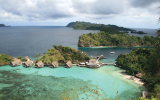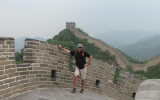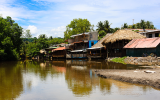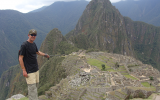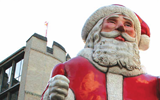- Magazine
- #readityourway
- Weekly Stories
- #shareyourstory
-
Adventure
- Abroad Travelling
- Africa Travelling
- Events
- Expos & Shows
- Festivals
- Fishing
- Free Diving
- Gliding
- Horse Riding
- Inspiring People
- Islands Travelling
- Kite/Windsurfing
- Motorbiking
- Motorised Water Sports
- Mountaineering
- Mountain Biking
- Off-road 4x4
- Off-road Motorbiking
- Paddling
- Performance Driving
- Photography
- Rock Climbing
- Rollerblading
- Sailing
- Scuba Diving
- Skateboarding
- Skydiving
- Snowboarding & Skiing
- Surfing
- Swimming
- Trail Running
- Wakeboarding
- Waveski Surfing
-
Sport
- Adventure Racing
- Fishing
- Free Diving
- Gliding
- Health & Fitness
- Horse Riding
- Inspiring People
- Kite/Windsurfing
- MMA
- Motorbiking
- Mountain Biking
- Multi-sport
- Off-road 4x4
- Off-road Motorbiking
- Paddling
- Performance Driving
- Photography
- Road Cycling
- Road Running
- Rock Climbing
- Rollerblading
- Sailing
- Scuba Diving
- Skateboarding
- Skydiving
- Snowboarding & Skiing
- Surfing
- Swimming
- Rugby
- Trail Running
- Triathlon
- Wakeboarding
- Waveski Surfing
- Lifestyle
- Calendar
Turkey a Traveller’s Treat
Words & Photos: Xen & Adri Ludick
Topic:
Abroad Travelling
Turkey has long held a fascination for Xen and me, and last year we had the privilege of visiting this amazing country that boasts many unique and fascinating features, and attracts between 28 and 30 million tourists each year.
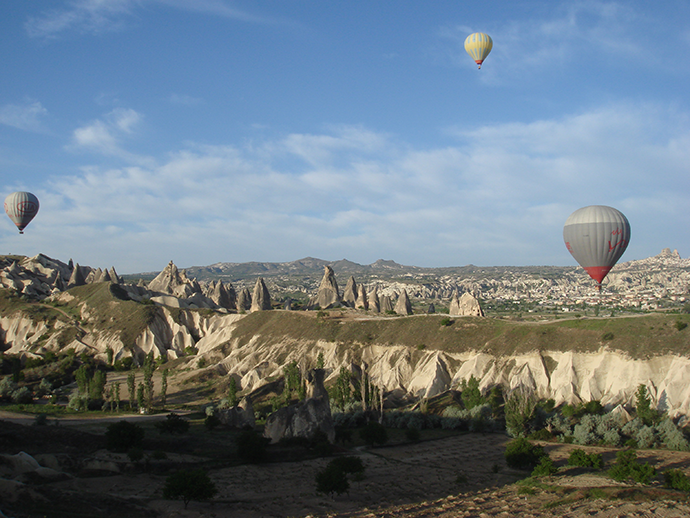
Having flow from Johannesburg to Ataturk Airport in Istanbul, on Turkish Airlines, we then flew to Milah, in Bodrum, a popular tourist destination on the west coast that holds the promise of adventure and fun. There were plenty of activities and things to do, and we especially enjoyed the fantastic view of the Mediterranean.
After two days there, we travelled by bus all along the coast of the Mediterranean Sea before turning inland to visit Ephesus, the metropolis of an antique age and the best preserved classical city of the Eastern Mediterranean. It is also among the best places in the world where one is able to 'soak in' the atmosphere of Roman times.
From Ephesus, we travelled northwest through Aydin, well known for its cotton and tobacco. For all its history (it's been there for over two millennia), the city has little to hold the casual visitor as earthquakes have ravaged many of its historic stone buildings, and most of the city's buildings were also destroyed by the retreating Greek troops in Turkey's War of Independence. En route to Pamukkale, a natural site in the Denizli province in southwestern Turkey, we stopped at the Apameia Restaurant where we enjoyed a local delicacy, the most delicious yoghurt topped with honey and poppy seeds.
Pamukkale, which literally means 'cotton castle', is one of Turkey's most impressive natural wonders. It is made up of a series of white travertine terraces cascading down a cliff, which is almost 200 metres high. The hard, white mineral deposits, which resemble snow from a distance, are caused by the high mineral content of the natural spring water that runs down the cliff and congregates in warm pools on the terraces. The spring water is an excellent source of health thanks to the rich minerals found within. This is such a popular tourist attraction that strict rules have been enforced to preserve its beauty, and visitors may no longer walk on the terraces. Those who want to enjoy the thermal waters, however, can take a dip in a nearby pool, littered with fragments of marble pillars. It was the thermal waters that led to the founding of the spa town of Hierapolis (a UNESCO World Heritage Site) in the second century B.C., and was given to the king of Pergamon by the Romans. The remains include the ancient ruins of the baths, the Temple of Apollo, a well-preserved amphitheatre and the largest necropolis or graveyard in Anatolia containing over 1,200 tombs; and these are just some of the natural wonders, historical beauties and miracles of health that Pamukkale embodies.
From Pamukkale we drove for eight hours on a very scenic journey to Cappadocia, another unique and miraculous natural wonder, and one of the best places to fly with hot air balloons. The history of Cappadocia began with the arrival of man after the lava from the volcanoes of Erciyes (to the east) and Hasan (to the west) had cooled more than 10,000 years ago. It is a stunning area of other-worldly rock formations, underground dwellings and subterranean churches, and it's also famous for its carpet weaving, wines and distinctive red pottery of the Avanos area.
Eager to find out more and get a bird's-eye view of this fascinating place and the spectacularly surrealistic landscapes, we rose before sunrise the next morning and gathered in the small town with a number of other tourists. We had coffee and snacks at a local restaurant before being transported to the site where our hot air balloon was to be launched. The launch site was a riot of colour and I’ve never seen so many hot air balloons in one place. We slowly lifted into the sky and flew silently over a landscape formed millions of years ago, with its fairy chimneys, orchards, vineyards, impressive valleys and the rippled ravines of Göreme and Urgup. An hour later, we landed perfectly atop a trailer and were met by the friendly team, who offered us a purple flower and a glass of champagne.
After this amazing experience, our tour through Cappadocia started. We first visited Kaymakli Yeralti Sehri, an underground city in Kaymakli and a World Heritage Site. There are more than a hundred underground settlements in the region, and many are not open to tourists. The underground cities are said to have been used since the Bronze Age, when increasing invasions forced local residents to build underground cities for protection and religious purposes. In the second century B.C., the first Christians escaped from the persecution of the Roman Empire and came to Cappadocia to settle in the underground cities. There they built provision rooms, ventilation chimneys, wine production areas, churches, toilets and meeting rooms. Millstone doors that could only be opened from the inside were used to block the tunnels for protection. Although only four levels of this underground city may be visited, it's not exactly known how many levels it originally consisted of. I couldn’t believe that a whole community stayed in those small holes, but to them it was a safe place from invading armies.
From there we visited a carpet factory, where the guide explained how they weave carpets, the colour techniques involved and how to extract silk and cotton from pots. He also told us that the girls may not weave for more than 45 minutes at a time or for more than three hours per day. By the time this fascinating tour ended we were quite hungry, so we headed to the Sofra Restaurant in Avanos and ordered a traditional stew called Pot Kebabs. The stew had been prepared in a pottery container, which is sealed with foil and a bread roll placed on top of it. It's then baked in a clay oven until the bread is done. The top of the roll is cut off and the most delicious stew with fresh bread is served.
With our tummies full, we took a stroll to the Göreme Open Air Museum. Göreme means 'place you cannot see'. Thousands of years ago when Erciyes was an active volcano, the lava from its eruptions covered an area of 20,000 square kilometres. The volcanic flows were then shaped by tremendous winds and water erosion over hundreds of years, with the softer rock and soil eroding away to leave a hard cap on the tall pillars, thus forming the fairy chimneys. With more than 400 churches in the vicinity of Göreme, it was one of the most important centres of Christianity between six and nine A.D. In three hundred A.D., the monks lived in the cave churches and would meditate and philosophize here. The most impressive church we visited was the Dark Church, and the fee to get in was worth every cent. This domed church dates back to thirteen B.C. and features four columns, a concept on which churches were built on in later years. Scenes from the Bible are depicted on the walls and although the Muslims destroyed all the faces on the frescoes, the Bible stories are still clear. The Turkish are very hospitable people, a lesson learnt from the Bible story where Abraham invited two visitors into his house. After they left, he realised that they were angels.
From Cappadocia we flew to Istanbul, the cradle of civilization. Known as Byzantium, Constantinople and finally Istanbul, it has been the capital of three Empires, and the legacy of its chequered past can be seen in the form of stunning palaces, castles, mosques, churches and monuments. Today, it is an enchanting blend of Eastern and Western culture, and a vibrant, modern city boasting a unique identity. Although it's no longer the capital of Turkey, Istanbul remains the country's cultural and business centre. Whilst here, we took in some of Istanbul's most famous sites - the Topkapi Palace, Haghia Sofia, Spice the Grand Bazaar and Blue Mosque - all places of interest that cannot be missed when visiting Istanbul!
Travelling tips:
• No inoculations are necessary for Turkey.
• Make copies of all your documents as hotels will keep your passport for administration purposes and only return it when you leave.
• It is safer to drink bottled water, as well as use it for brushing teeth.
• Cash is the best option when shopping at the markets or in smaller shops.
• Keep anti-bacterial wipes in your bag, as the toilets and public places aren’t always that clean.
• If you see a sign that says 'CW', it means bathroom. Most places will charge you between one Lira and 50 cents to use the bathroom. Most toilets are long drops, so be prepared. Also carry tissues in case there is no toilet paper.
• When enjoying their cuisine, you need to be open minded about the food, which is really good but different.
Until next time, safe travels.
Issue:
Issue 22 Feb'13
Contributor:
Xen and Adri Ludick
Related content
|
|
|
|
|
|
|
|
|
|



